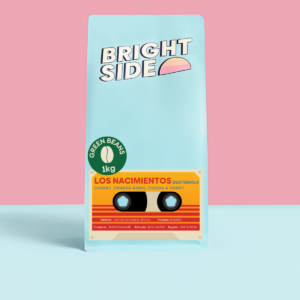Fresh Delicious Ethically sourced Brighter green, unroasted coffee beans for you to roast at home.
Better coffee starts with better beans. Brightside partners with coops around the world to source you delicious and ethically farmed green beans. We only stock freshly arrived green beans for your home roasting. Order online delivery Australia wide.
View our range of unroasted green coffee beans bellow!








